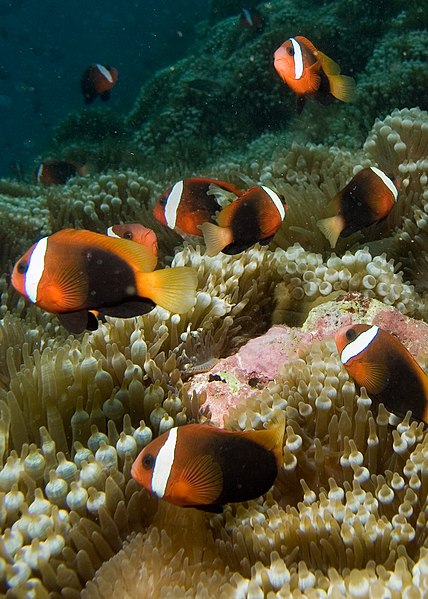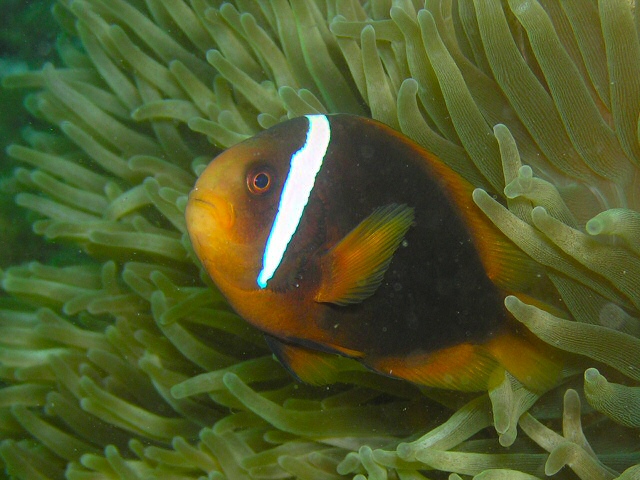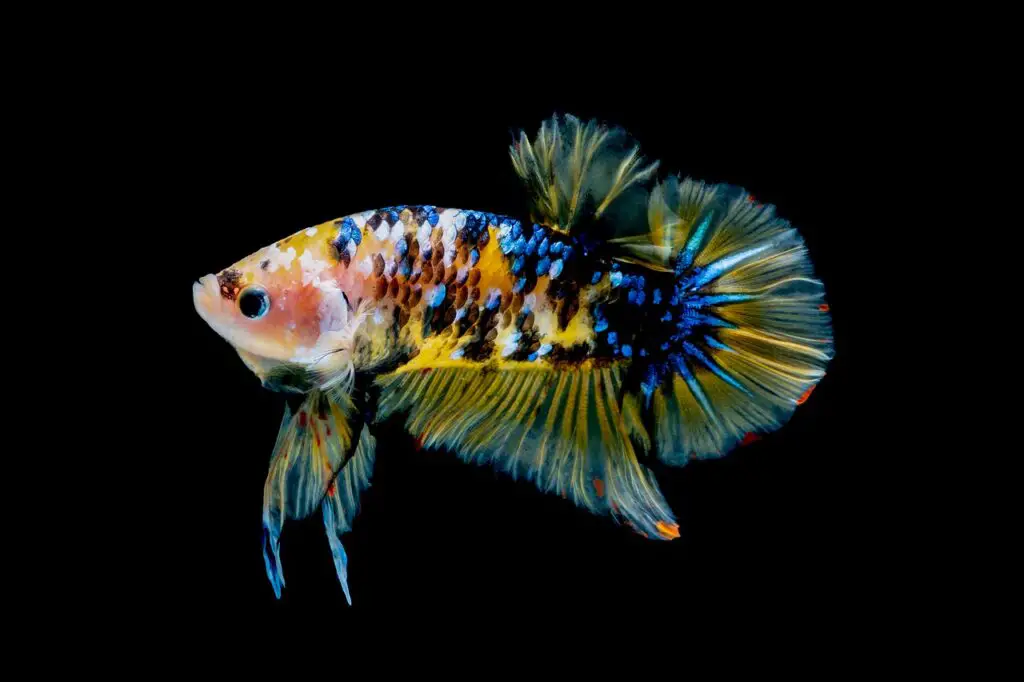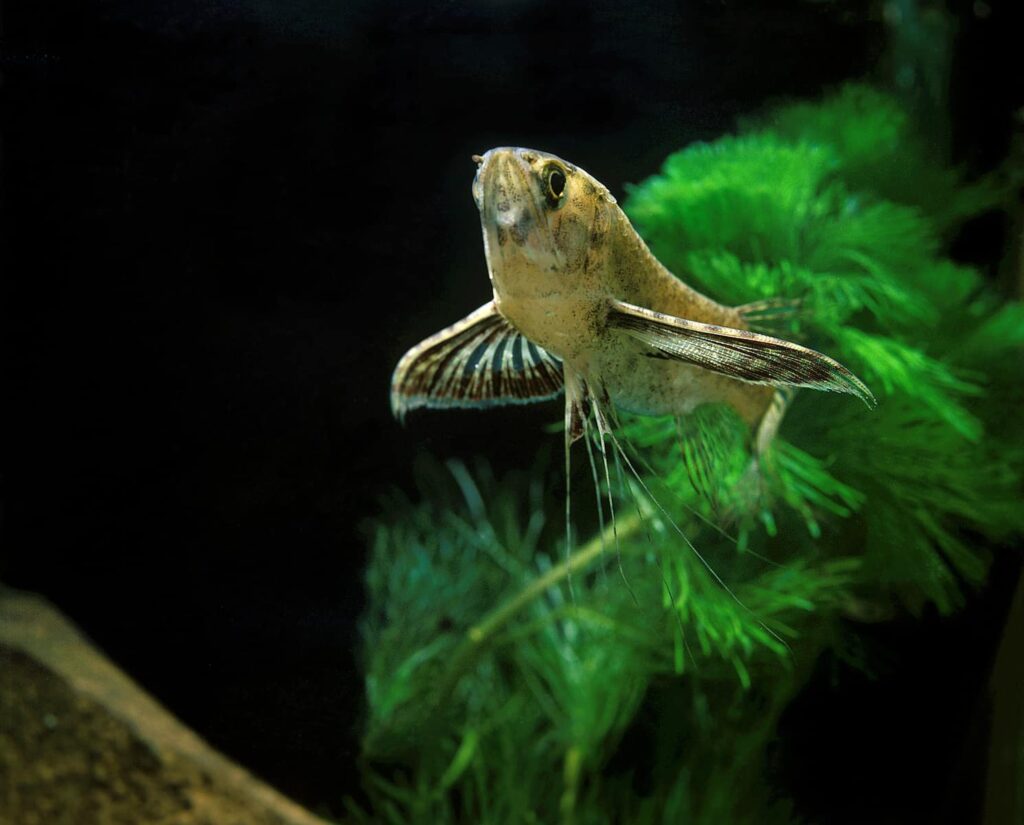The tomato clownfish is one of the most popular breeds of clownfish out there, and it’s really not hard to see why. This saltwater favourite is really easy to look after providing you have all the essentials and make sure to feed it regularly.
Here’s our full guide on what to expect when looking after your own tomato clownfish. What makes it different from the other species?
- Fish Lifespan: 2 Years Generally, Can Live for More
- Tank Size: At Least 30 Gallons
- Water Temperature: Between 72 and 78F
- pH: Between 8.1 and 8.4
- Hardness: Between 8 and 12 dKH
- Compatibility: Compatible with Damsels, Angels and Basslets
- Fish Size: Up to 5 Inches
How do you take care of tomato clownfish?
Tomato clownfish, much like the common variety, are really simple to look after. They have few tank and water requirements and will normally weather the years to come without you having to do much tweaking to your aquarium. They normally grow to be around 3.5 inches in length but can reach up to 5 inches, meaning you will need to make sure you have a mid to large sized tank to house them all in.

Super-durable, these fish are great for aquarium newbies but are also really rewarding pets for the seasoned tankmaster. Therefore, you’ll likely get a lot of years out of a tomato clownfish providing you give them the care they demand. Generally, you can expect this species to live for around 2 years, but they can live to be older than a decade if you’re really careful. They are hardy and very pleasing to keep.
This breed of clownfish will happily eat just about everything, so a mixed diet of meat and herbivore food, as well as fish flakes, will likely go down well. Raising young tomato clownfish, you probably won’t go wrong offering them brine shrimp. Your local aquarium expert or vet will know more.
This fish hails from the Pacific and is generally found in the wilds of the Indonesian reefs, making it a genuine tropical variety. They are a redder orange than common clownfish which is what gives them their distinctive name! They are actually pretty easy to tell apart from the common species. This species also has a further family strand, the fire clown, which tends to be a little rarer.
Tomato clownfish are relatively easy to breed and will happily live together, making them a great choice if you are keen to stock your tank full of interesting looking species. The clownfish, in our opinion, is one of the best starter choices for saltwater aquariums, and therefore, if you’re serious about making a go of your salt tank, look into these critters first.
Are tomato clownfish aggressive?
Like other clownfish, the tomato species can be aggressive, but only really when the time calls for it.
Experts will refer to the tomato clownfish as ‘semi-aggressive’. This means that, unlike some of the naturally aggressive species, such as damselfish, you are likely to only really have a problem if your tomato clownfish get territorial. If you place fish in the same tank which are likely to muscle in on its space, or which are actively going to try and hunt it, then you might notice their true colours!
Otherwise, tomato clownfish are pretty happy to go about their own business. They are neither too shy nor too angsty, making them a nice, balanced pet if you’re a genuine novice to keeping tank. Always make sure to check out compatibility guides and charts, too, if you’re not sure whether or not bringing this type of clownfish into the water is going to be right for your community.
What are the best fish to put with clownfish?
Clownfish tend to get on well with a variety of critters and will actually get on famously with some of the more aggressive species, such as angels and damsels, providing the tank is set up properly.
There’s no guarantee of how clownfish will react in the long run as they can be aggressive as and when the time calls for it. Therefore, it’s always a good idea to consult those compatibility guides and to make sure your clownfish is swimming in a tank with other species of a similar size and temperament. Certainly, you should avoid putting the tomato clownfish in the same tank as anything too small and timid, as it’s likely to swallow them up.

Clownfish don’t always go well together as a species, though the tomato clownfish seems to be fairly happy to swim with its own kind. Again, this may vary depending on the tank and what’s already in there. We’d generally advise against putting any clownfish in the same tank as anglers, but even the more aggressive angelfish and damselfish, providing they have their own little nooks and are around the same size, will likely do well with clownfish. Just keep a close eye on them.
If you are just getting started with tomato clownfish, our advice would be to tread carefully at first. It’s not always easy to balance different fish in the same community, so this is likely to be something that you can work your way up to.
What is the life expectancy of a clownfish?
Different species of clownfish will live for various lengths of time, but the tomato clownfish could live for more than 15 years if kept well.
Generally, however, a tank-reared tomato clownfish can expect to live for 2 years – it really is worth keeping an open mind. Different tank conditions will likely dictate how long your clownfish lives for, meaning it is simply worth doing the best job you can as a fish keeper and ensuring that they feel safe and are well-fed.
The tomato clownfish is an extremely rewarding pet that will likely give you years of rewarding ownership, so be willing to meet their relatively simple demands!
Will clownfish kill other fish?
It’s rare that a clownfish will kill other fish as they are not the most aggressive species in the tank. However, even the tomato clownfish can and will attack others if it feels threatened.
Therefore, providing you place your tomato clownfish in a tank with other fish it is likely to live well alongside, you shouldn’t have much to worry about. However, this may be a more advanced side to fish keeping that you work your way up to.

Some clownfish will get territorial with each other, which means it is a good idea to have a big tank with lots of space for them to hide away. The tomato variety is not the most aggressive of the clownfish, though, so you probably won’t have much to worry about.
Try and give your clownfish their own space and lots of nooks and crannies to swim and hide under. This way, if they do want to get some private time away from the community, they can. Everyone needs some private time every now and again!
How long do tomato clownfish live?
As mentioned, you will likely find that the tomato clownfish lives for at least two years providing you set up the right conditions.
However, some people report that tomato clownfish can live for almost two decades. That’s a lot of time in the same tank! Our advice would be to keep an open mind. Bear in mind that tomato clownfish have the ability to stay with you for a long time – but that it’s all down to individual genetics as well as their tank conditions.
Generally, tomato clownfish will be pretty simple to look after as their tank and water demands aren’t too restrictive or difficult to meet. There’s a reason why they are some of the most rewarding ‘starter pets’ for your saltwater aquarium.
What are the different types of clownfish?
There are many different types of clownfish, and most people will be familiar with the ‘common’ variety, funnily enough. There’s also the percula, which is closely related.
The tomato clownfish is closely related to the fire clown, which is a rarer breed. These fish are redder in colour compared to your common species, which is why it is so easy to tell them apart.
You should also look out for the maroon clownfish. This species tends to grow to be much bigger than the common and tomato varieties and is also known to be much more aggressive. Therefore, it’s normally best to try and keep the maroon variety in a tank on its own, where it can’t create much mischief!
The clownfish in general is a very hardy species and most of the variations tend to be in how each variety looks. The ‘classic’ look, that which you might be familiar with through Disney movies, is the common variety, though the tomato clownfish is also fairly common.
On the whole, you know what you are getting into with a clownfish, as they tend to have a balanced temperament and can swim well with other fish of varying levels of aggression!



